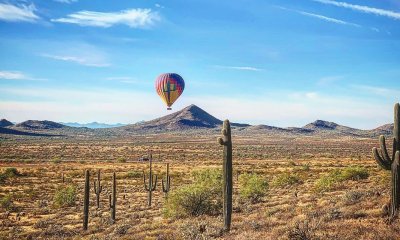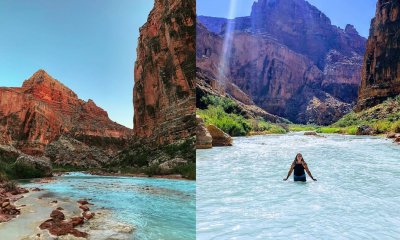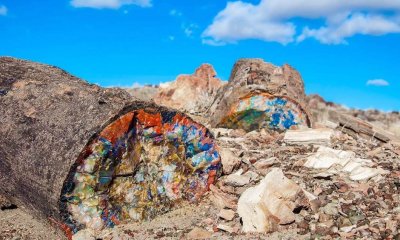Alabama
Here are the Top 10 Plantations in Alabama You’ll Want To Add On Your Next Travel Itinerary
Have you been to Alabama? I take it you haven’t yet because you’re getting giddy with excitement as you’re reading this entry. Or if you have already, isn’t it just nice to relive all the places you’ve been to and the experiences that Alabama has offered you?
Alabama is known for so many things. Among them is the fact that Alabama is the state where the Civil Rights Movement was birthed. On a lighter note, nobody and no state could ever match Alabama’s pecan pie, peanuts, and of course, the classic Southern barbecue that’s grilled with love and paired with unmatched hospitality.
Among so many things, Alabama was once home to a ton of plantations, most of which we can still visit today. However, you might not find crops anymore. The crops have long gone along with the time, but the places that generated real-life experiences and cash flow and contributed to Alabama’s culture still stand tall and proud today. Some of the crops that Alabama was famously known for were cotton, hay, corn, peanuts, and soybeans. While you may still see some areas generating the crop produce, Alabama is now home to a vast selection of plantations to add to your itinerary. Or, you know, just unwind in case you’re just around the area.
Here are the Top 10 Plantations in Alabama You Don’t Want To Miss
Barton Hall
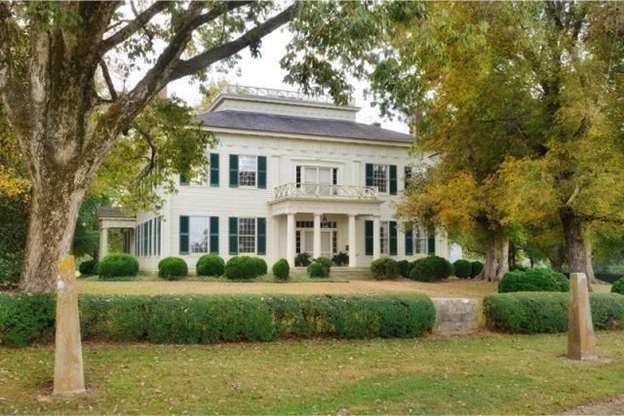
Source: https://www.realtor.com/news/unique-homes/barton-hall-alabama-historic-home/
Barton Hall, also known as the Cunningham Plantation, had been sitting firmly on Alabamian lands long before the American Civil War sparked. It was designated as a National Historic Landmark in 1973 because of its architecture.
In 1840, a Tennessee native named Armestead Barton moved to what is now known as Cherokee County, Alabama, and purchased over 40,000 acres of land. Seven years later, he died without ever seeing the final construction of his house – Barton Hall. His wife and now widow, Amanda Cook Barton, supervised the completion of the Greek revival architecture building. Amanda died in 1887 and left the house in disrepair.
Today, Barton Hall is a well-known tourist spot in Cherokee, Alabama. You’ll be able to join guided tours tackling its history and architecture.
Location: Cherokee, AL 35616
See also: Beautiful places in Alabama
Gaineswood
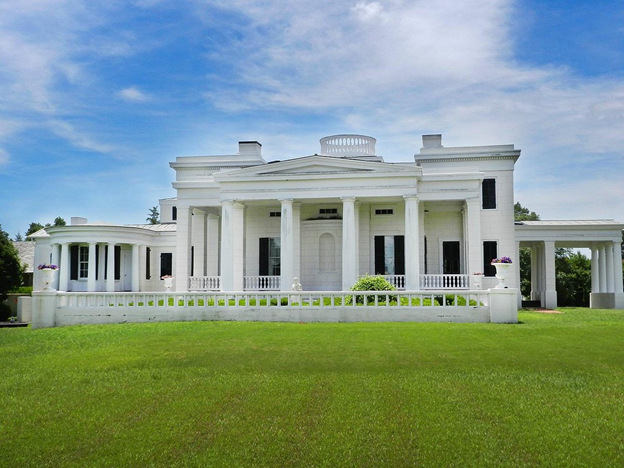
Source: https://www.tripadvisor.com/Attraction_Review-g30481-d2530152-Reviews-Gaineswood-Demopolis_Alabama.html
Gaineswood is yet another Greek Revival-style building. Gaineswood is a plantation house and the biggest one in Marengo County. It is now a house museum operated by the Alabama Historical Commission.
The plantation was previously owned by George Strother Gaines until a wealthy young cotton planter from North Carolina bought it from him. Built and designed by General Nathan Bryan Whitfield, naming the estate Marlmont and turning it into one big cotton plantation. Years later, he changed the name to Gaineswood to honor the historic person who previously owned the 480-acre land.
It is said that Gaineswood was where George Gaines secretly met with the famous Chief Pushmataha of the Choctaw Nation under one of the old oak trees erected on the property. That meeting led to the Choctaw’s removal from the Indian Territory. In the present day, the oak tree is now known as the Pushmataha Oak.
Gaineswood house museum is available for viewing and guided tours.
Location: 805 South Cedar Avenue, Demopolis, Alabama
Ivy Green
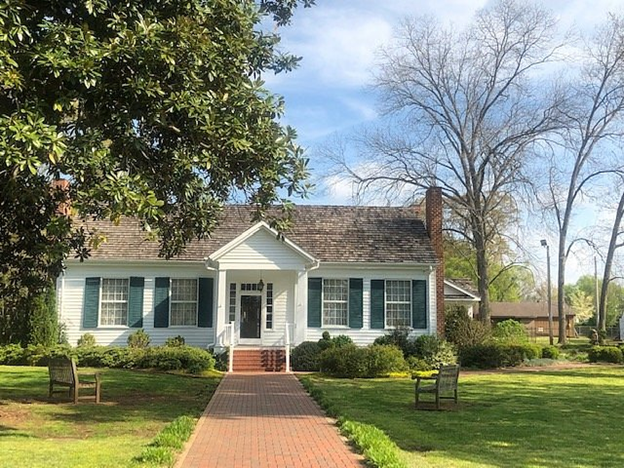
Source: https://www.tripadvisor.com/Attraction_Review-g30890-d270584-Reviews-Ivy_Green-Tuscumbia_Alabama.html
Ivy Green is a 10-acre land that served as the birthplace and childhood home of Helen Keller. And yes, it is where the well pump where Anne Sullivan and Helen Keller had their communication breakthrough. David Keller, Helen’s grandfather, previously owned the estate. In 1954, it became a house museum dedicated to Helen Keller.
Helen Keller grew up to be an American author, disability rights advocate due to being born deaf and blind, a political activist, and a lecturer. The Ivy Green estate holds Helen’s history and her life-changing experiences with Anne Sullivan. You can learn more about her life and books by participating in Ivy Green’s guided tours.
Location: 300 West North Commons, Tuscumbia, Alabama
Kenworthy Hall
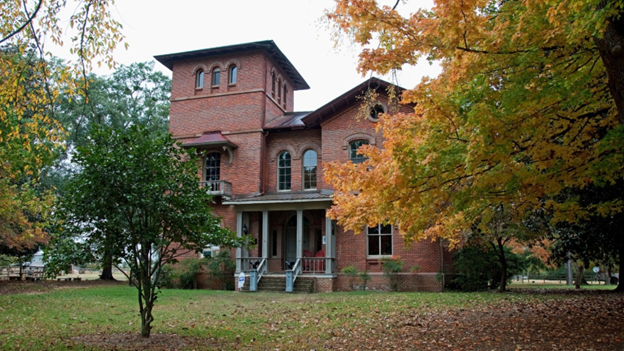
Source: https://www.ruralswalabama.org/attraction/kenworthy-hall-1858-1860/
Kenworthy Hall, also known as Carlisle Hall, finished its construction in 1858 on the eve of the American Civil War. Edward Kenworthy Carlisle, a planter and cotton factor, commissioned Richard Upjohn to build this remarkably sturdy estate for him. Speaking of remarkably sturdy, it seemed that Richard Upjohn did an astounding job in constructing the house, seeing that 50 years later, the Kenworthy Hall has not undergone even one major renovation.
Kenworthy Hall is a privately-owned estate bought and sold from one family to another. It began when Augusta Jones, Edward Kenworthy Carlisle’s daughter, inherited the 440-acre estate and plantation. Having another home in Selma, Alabama, Augusta Jones left Kenworthy Hall in poor condition by not inhabiting it. Years later, the Hill family bought the estate, which was then bought by Miss Kay Klassen in 1957, and, once again, sold and bought by Mr. and Mrs. Heber Martin. Finally, the current owners of the residence are Mr. and Mrs. Pigg, who are currently experiencing the various renovations done by the previous owners.
Location: 23200 AL-14, Marion, AL 36756
Altwood
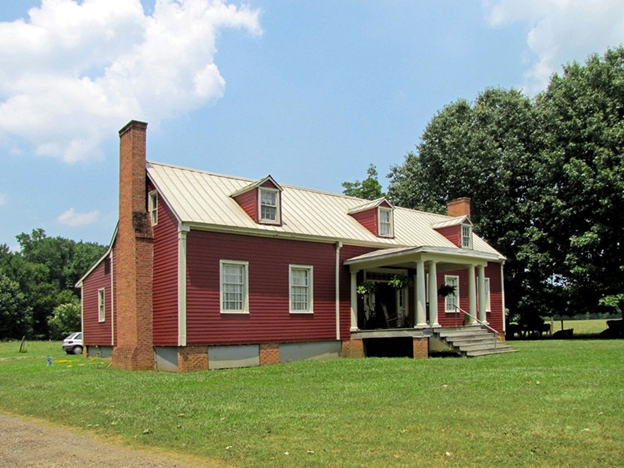
Source: https://www.ruralswalabama.org/attraction/altwood-home-near-faunsdale-al-1836-later-expanded/
Formerly a log dogtrot house, Altwood was built in 1836 by Richard H. Adams. Later on, it was renovated to resemble a Tidewater-type cottage. It is a historic plantation house located six miles southwest of Faunsdale. Later on, Altwood was moved to Cedar Crest Farms in 1988 and was added to the National Register of Historic Places on July 13, 1993, as a part of the Plantation Houses of the Alabama Canebrake and Their Associated Outbuildings. It is currently privately owned.
Location: 611 Cedarcrest Ln, Faunsdale, AL 36738
Belle Mina
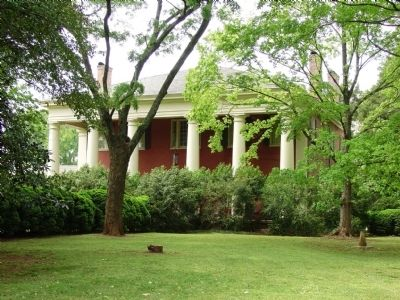
Source: https://www.hmdb.org/m.asp?m=85424
Owned and built for Alabama’s second governor, Thomas Bibb, Belle Mina, also known simply as Belmina, was a forced-labor farm and plantation sitting on a 2,500-acre land. Having faced the dilemma that there were no sawed lumber or ready-made bricks in all of Alabama, former governor Thomas Bibb, with all of his might, took years to find and enslave skilled artisans to manually make bricks in kilns for his house.
The Belle Mina plantation stayed in the Bibbs family’s ownership until 1941, when Dr. and Mrs. Berthold Kennedy purchased it. The Kennedies decided to add a few minor renovations to the Belle Mina house.
Location: Belle Mina, Alabama 35671
Bermuda Hill
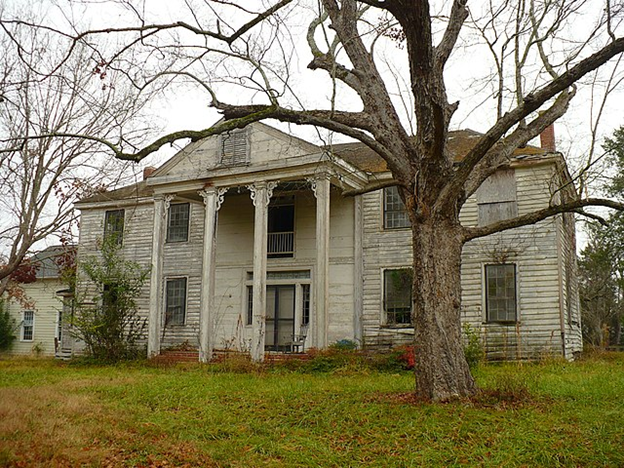
Source: https://en.wikipedia.org/wiki/Bermuda_Hill
Bermuda Hill, or Liver House, is a historic cotton plantation house in Hale County overlooking Prairieville, Alabama. It was originally owned by the Manning family, who were early settlers and planters in Prairieville. Later, in 1845, William W. Manning sold the land to Willian Weeden of Madison County. To this day, it remains unclear who built the house between Manning and Weeden. It was then acquired by Dr. James Daniel Browder, who was also the owner of the nearby Hawthorne during the Confederate-era Assessment of Taxes on Real Estate in Marengo for 1863.
In 2011, Bermuda Hill was placed in Alabama’s Places in Peril due to its saddening state. However, new owners have purchased the home and renovated it since 2013. Therefore, like Belle Mina, Altwood, and Kenworthy Hall, Bermuda Hill is closed to the public.
Location: Hale County, Alabama
Belle Mont
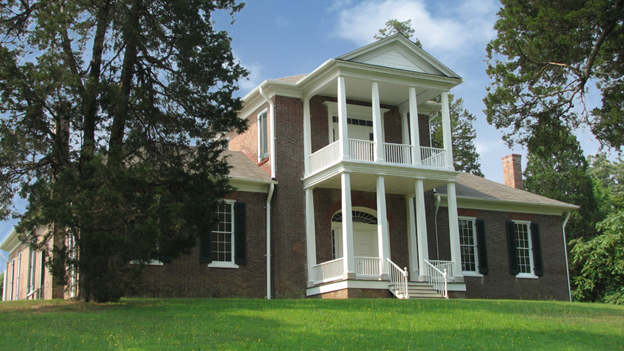
Source: https://www.northalabama.org/listing/belle-mont-mansion/456/
Are you ready to embark on another plantation escapade? Unlike the previous ones, Belle Mont is open to the public with guided tours and more. It was built for Dr. Alexander W. Mitchell between 1828 and 1832. Dr. Mitchell graduated from the University of Edinburgh and was also one of the first large-scale planters and slaveholders in Alabama.
Later on, Dr. Alexander W. Mitchell sold all of his 1,680-acre plantation to Virginia native Mr. Isaac Winston. It remained under the Winston family until 1941. On February 23, 1982, the house was added to the National Register of Historic Places. A year later, the house and 33 acres of the estate were donated to the Alabama Historical Commission.
Location: 1569 Cook Ln, Tuscumbia, AL 35674
Cuba Plantation
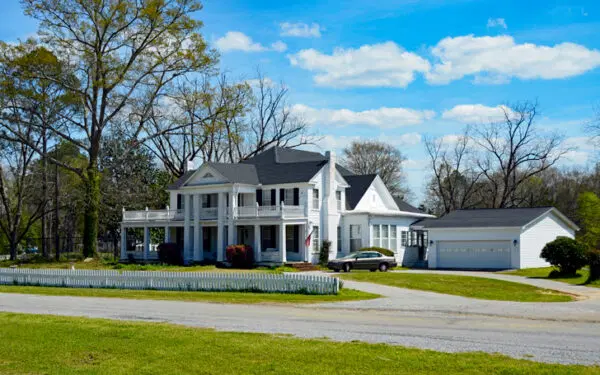
Source: https://encyclopediaofalabama.org/article/cuba/
The Cuba Plantation house is a historic plantation house built in 1850 by Andrew Pickens Calhoun as an overseer’s house for his second slave plantation. Later on, he purchased an additional 420 acres of land from William Henry Tayloe. And yes, you got it right, Andrew Calhoun came to be the seventh vice president of the United States.
In 1864, the Cuba Plantation house was sold to Tristram Benjamin Bethea who was originally from Montgomery County, Alabama. Under the Bethea family, a second story was added. Fast forward to July 13, 1993, the Cuba Plantation house was added to the National Register of Historic Places as a part of the Plantation Houses of the Alabama Canebrake and Their Associated Outbuildings Multiple Property Submission.
Location: Faunsdale, Alabama
Grey Columns
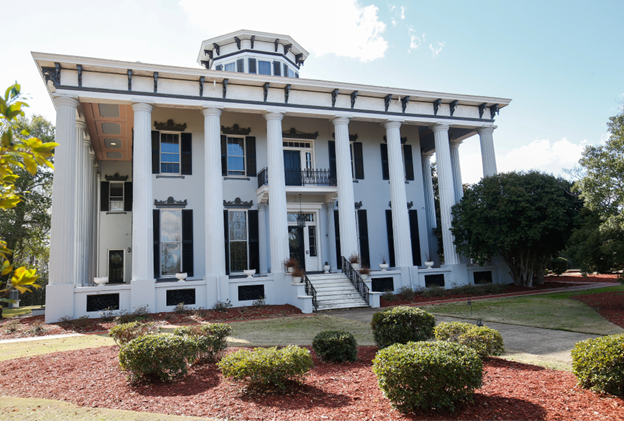
Source: https://www.birminghamtimes.com/2017/03/tuskegee-how-one-alabama-town-helped-shape-history/
Grey Columns was owned and built by William Varner, a Macon County planter. His menagerie of enslaved African Americans on the 6-acre property made it possible. The property remained in the Varner family’s possession until it was acquired by the National Park Service in 1974. After being private property, the Grey Columns became an office and a museum for the Tuskegee Institute National Historic Site.
In the 1980s, from being an office and a museum, the Grey Columns became the official residence for the Tuskegee University presidents. Tuskegee University is one of the nation’s oldest historically Black institutions of higher learning.
Location: 399 Old Montgomery Rd., Tuskegee, Alabama
Alabama’s fertile soils made these plantations possible. After a long bout with history, the thousands of acres of land combined make up one of the most notable personalities of Alabama as a state.
Although not bearing crops anymore, the Alabama plantations have become a part of the Alabamians’ lives, albeit some locations on the list have become private property. Add these to your travel itinerary for a more personal approach to the state that is well-known for its love and hospitality. These plantation mansions, although now surrounded by amazing nature instead of crops, can make you dive deep into the experiences that made Alabama into what it is today. It is one of the magical places where you can bask in the beauty of the now yet travel back in time.
Pass by and see the pillars of Alabamian culture and society and experience these soils’ rich history.












